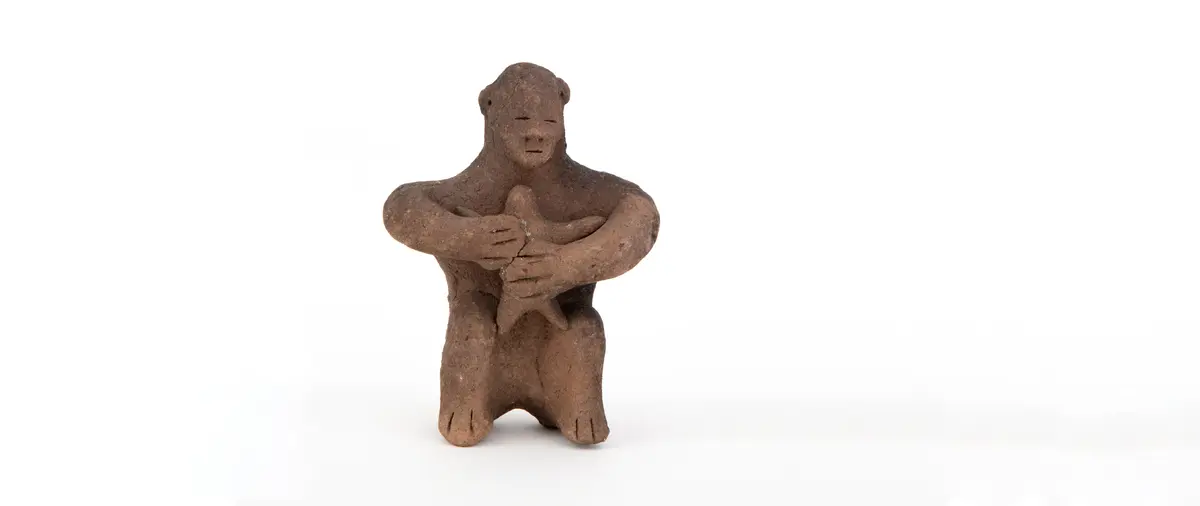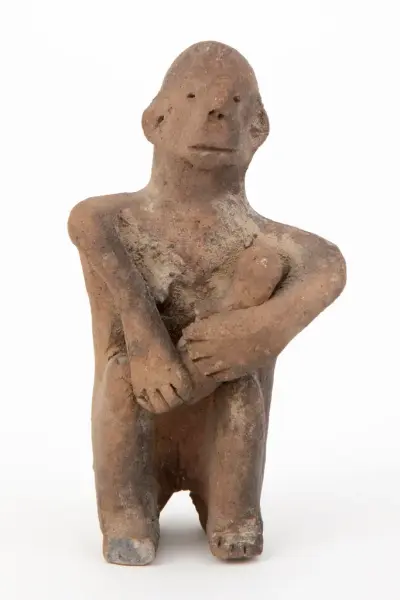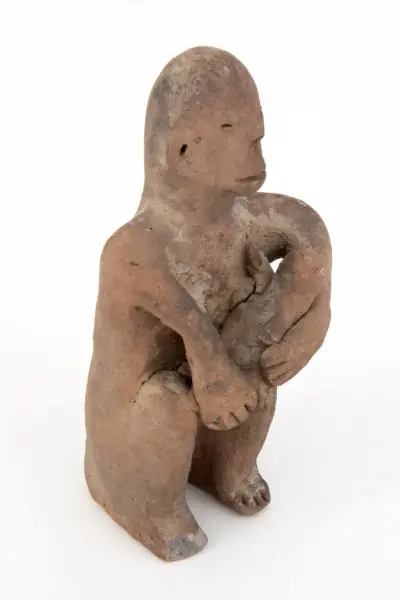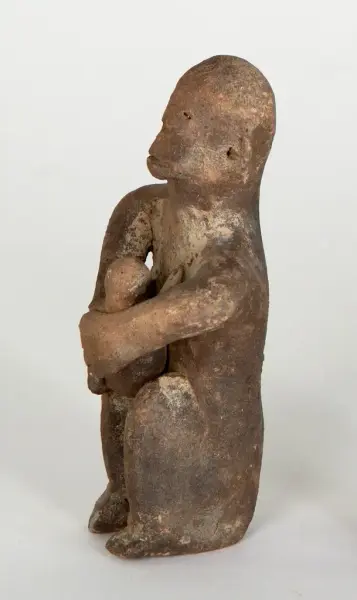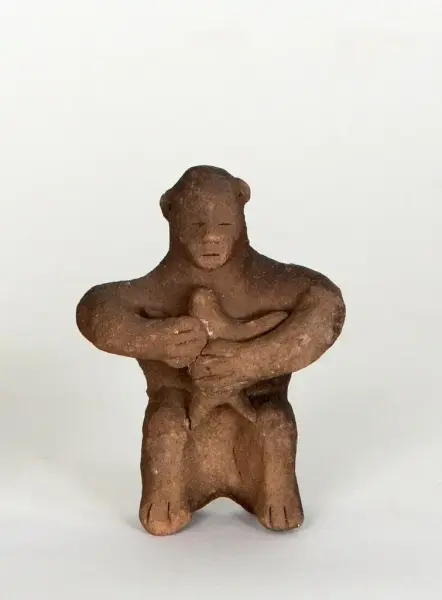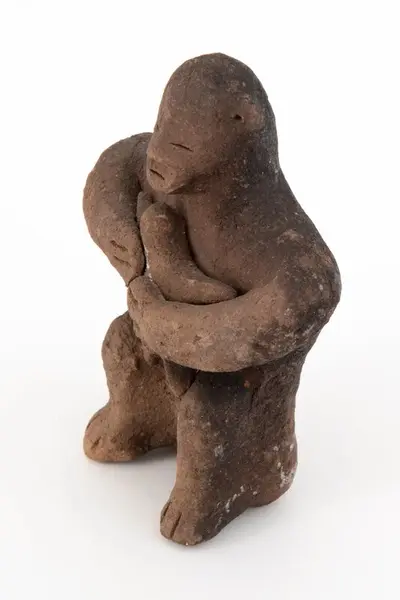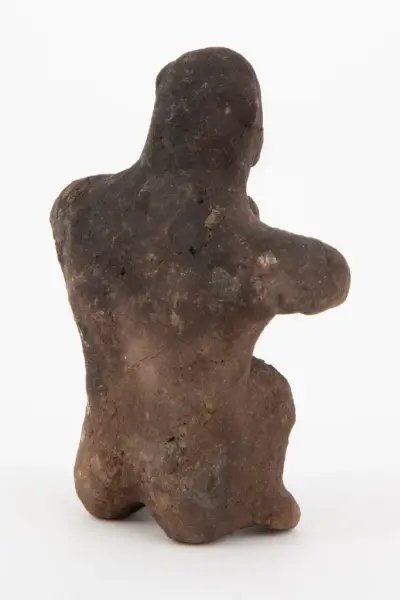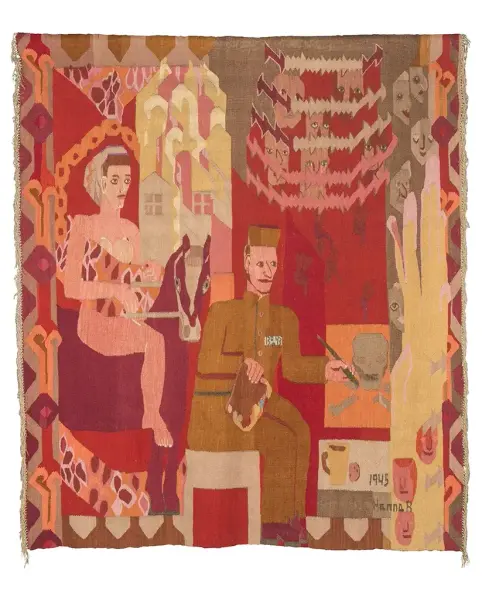Dogū figurine
clay, 10,8 cm high, Japan, 11,000–400 BC,
From the collection of the Nordenfjeldske Kunstindustrimuseum
By the standards of geologic time, museums were born this afternoon. Yet some of these newborns possess objects from long before their inception and far beyond their location. This is the case with dogū, clay figurines that date back to the Jōmon period (11,000–400 BC) and were largely located in the territory of present-day Japan. These sculptures are now part of western museum collections including Nordenfjeldske Kunstindustrimuseum. According to the Metropolitan Museum of Art’s Collection of Asian Art research entry, since several of the dogū “appear to have been broken intentionally, it has been hypothesized that they were used in rituals meant to cure physical ailments. It seems that once the affliction was ceremonially transferred to the figure, the clay image was discarded. This speculation would explain why most dogū are found scattered around or in refuse heaps rather than in graves.”
Three of the dogū are part of the Nordenfjeldske Kunstindustrimuseum collection in Trondheim. The museum was established approximately 130 years ago as a meeting point between handicrafts, design, and the quickly expanding industrial habitat, both in terms of arts and crafts production and dissemination. The original collection was assembled by the museum’s first director Jens Thiis, a male Norwegian art historian with an interest in art nouveau and a wide variety of Japanese objects. Having earned a reputation for possessing a strong East Asian collection, the museum received several hundred objects of Asian origin from Gunborg and Olav Apold in 1984 and 1987. Among the handicrafts from Korea, China, Vietnam, and Thailand were three figurines of highly stylized female bodies, known as dogū, which were mistakenly attributed as haniwa. Drawing from researcher and curator Pernille Lystlund Matzen’s dissertation Whose Bildung? Institutional self-critique in art exhibitions on colonial history (2024), we approach this mistake — a common and almost inevitable error in museum collections built on colonial logic — as an invitation for institutional self-critique.
As Lystlund Matzen writes:
Since their inception as public institutions, art museums have been closely associated with ideas of Bildung, which in its historical conception was a central means to the ‘civilizing’ and disciplining of citizens in the emerging European nation-states in the late 18th and early 19th century. (…) By exhibiting the works in their close connections with colonialism and colonial history, some of the basic assumptions of normative art history are made visible and called into question: the imagined demarcation line between art and ethnography, the idea of the artwork as the product of an autonomous creative force, as well as the implicit (culturally homogenous, white) ‘we’ that the art museum has operated within its modes of address.
- Yaniya Mikhalina
